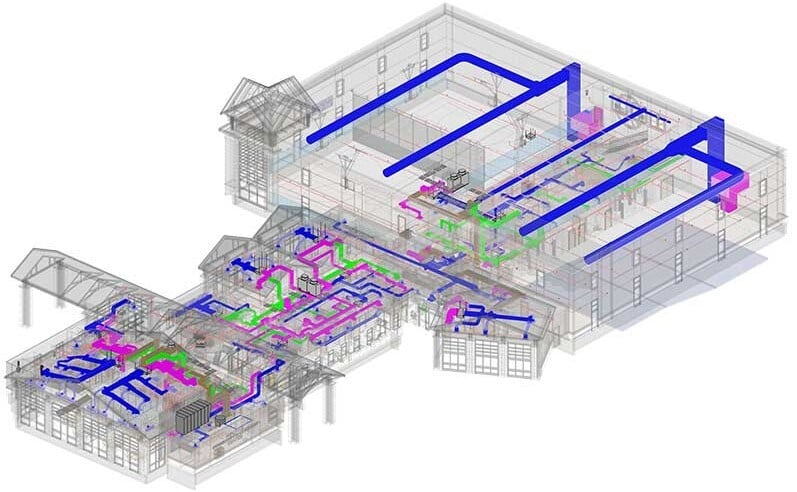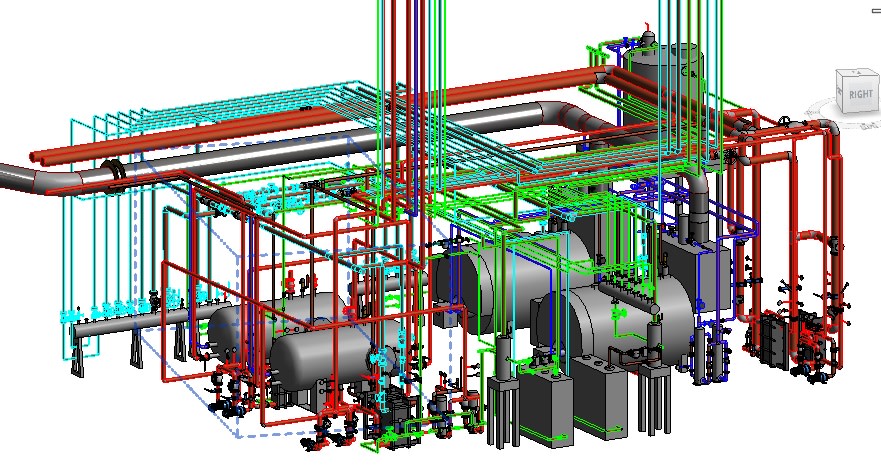-1.png)
So, you are either about to walk into an interview as a BIM electrical modeller, or you are simply curious about what this role actually entails. Either way, you are in the right place! The field of BIM for electrical engineering is one of the most in-demand areas in the modern MEP industry, and interviewers are always on the lookout for professionals who are as confident with Revit MEP as they are with solving real-world design challenges.
In this blog, we are diving into common yet insightful BIM electrical modeler interview questions. We will cover everything from technical know-how and collaboration, to soft skills that truly matter. Let us get you interview-ready!
BIM Electrical Modeller Job Role Questions

Q1: What is a BIM electrical modeller, and what do they do?
Ans: A BIM electrical modeller is responsible for creating accurate 3D models of electrical systems in construction projects using BIM modelling software. This includes lighting, power, communication systems, and more. They work closely with architects, structural engineers, and other MEP engineers to ensure everything fits together smoothly.
Q2: What does a day in the life of a BIM electrical modeller look like?
Ans: A typical day might involve working in Revit MEP, updating MEP electrical layouts, coordinating with teams, resolving clashes, and ensuring the model follows design standards. They are often key contributors in coordination meetings for MEP projects.
Q3: Is BIM only about software skills?
Ans: Not at all. While being proficient with tools like Revit and Navisworks is important, a strong understanding of electrical engineering principles and MEP design standards is just as crucial.
Q4: What about the salary?
Ans: The BIM electrical modeller's salary varies globally. In India, professionals can expect to earn anywhere between ₹3.5 lakhs to ₹10 lakhs per annum, depending on their experience, expertise in BIM software, and the scale of the MEP projects they handle. Those working with international firms or on large-scale infrastructure projects may earn even more. The role is considered lucrative, especially with the rising demand for BIM MEP services in the Indian MEP industry.
Top Interview Questions for BIM Electrical Modellers
Q1: How do you begin setting up an electrical BIM model?
Ans: I start by linking architectural and structural models into Revit MEP, then set up views and levels. I begin laying out circuits, panels, and electrical devices, always following project-specific standards and the BIM Execution Plan (BEP).
Q2: Which BIM tools have you worked with?
Ans: I primarily use Revit MEP for modelling, but also Navisworks for clash detection, AutoCAD for drafting, and BIM 360 for cloud collaboration. Being flexible with different BIM software is a big asset.
Q3: How do you ensure coordination between electrical and other MEP systems?
Ans: Coordination is key. I use clash detection tools and attend coordination meetings with mechanical and plumbing teams to ensure all systems align. This is essential for clean, efficient BIM MEP services.
Q4: What standards or codes do you follow when modelling?
Ans: Depending on the region, I adhere to local standards like BS7671 or NEC. Compliance ensures safety and approval from authorities, especially in government or hospital MEP projects.
Q5: Have you ever created custom Revit families?
Ans: Yes, for items like lighting fixtures, switchgear, and panel boards. When the default libraries do not meet project needs, custom family creation becomes a must-have skill.
Q6: Can you describe a challenging project you worked on?
Ans: I worked on a high-rise commercial tower with limited ceiling space. Routing MEP electrical systems alongside HVAC and plumbing was extremely tight. We solved this through multiple coordination sessions and model revisions. It taught me the value of teamwork in the MEP industry.
Q7: How do you deal with last-minute design changes?
Ans: I assess the impact on circuits and distribution, then update the model while ensuring it stays coordinated with architectural and structural changes. Fast communication and proper version control are essential.
Q8: Have you worked directly with MEP engineers?
Ans: Yes, I regularly collaborate with MEP engineers, especially when designing systems like fire alarms, emergency lighting, and power distribution. Aligning our efforts ensures the success of the project.
Q9: How do you communicate technical information to non-technical stakeholders?
Ans: I avoid jargon and use visuals or walkthroughs from the model to explain concepts. I often use colour-coded layouts or simple diagrams to get the message across.
Q10: Do you contribute to company BIM standards or protocols?
Ans: Absolutely. In my last role, I helped create a QA checklist for our BIM electrical models and improved our naming conventions and folder structures for better collaboration.
Q11: How do you manage your time across multiple deadlines?
Ans: I use project tracking tools and create daily to-do lists. I also communicate regularly with project leads to ensure I meet milestones without compromising model quality.
Q12: How do you stay updated with industry changes?
Ans: I attend webinars, follow MEP design forums, and recently completed a Revit electrical course. Continuous learning is essential in the fast-evolving world of BIM modelling software.
Q13: What would you say makes a great BIM electrical modeller?
Ans: Attention to detail, strong problem-solving skills, and clear communication. Being proficient in electrical BIM modelling is not just about drawing wires; it is about ensuring that those systems function flawlessly in the real world.
Q14: Do you mentor junior staff or interns?
Ans: Yes. I believe mentoring strengthens the entire team. I often guide newcomers on best practices in BIM electrical workflows and answer any modelling or technical queries they might have.
Q15: How do you perform quality control on your models?
Ans: I double-check circuit connections, panel loads, and ensure that all systems are correctly assigned. I also run interference checks and validate compliance with the latest linked models and project standards.
Q16: What is your favourite part about working in BIM for electrical engineering?
Ans: Honestly, it is seeing your digital model turn into a real building! There is something incredibly satisfying about knowing your work powers the lights, systems, and life inside a space.
Conclusion
Preparing for an interview as a BIM electrical modeller can feel daunting, but it does not have to be! With the right mix of technical know-how, communication skills, and a bit of confidence, you can stand out from the crowd. Whether you are discussing circuit loads, collaborating with a MEP engineer, or navigating the latest BIM modelling software, remember—you are a vital part of the construction puzzle.
To sharpen your edge, consider enrolling in a MEP course or a Revit electrical course to reinforce your foundations. Keep building your knowledge, and soon, you will not just be answering BIM electrical modeller interview questions; you will be acing them!
We suggest you to explore the BIM Professional Course for MEP Engineers by Novatr. And visit our Resources Page to learn about the latest industry developments.
Was this content helpful to you



.jpeg)


.png)
